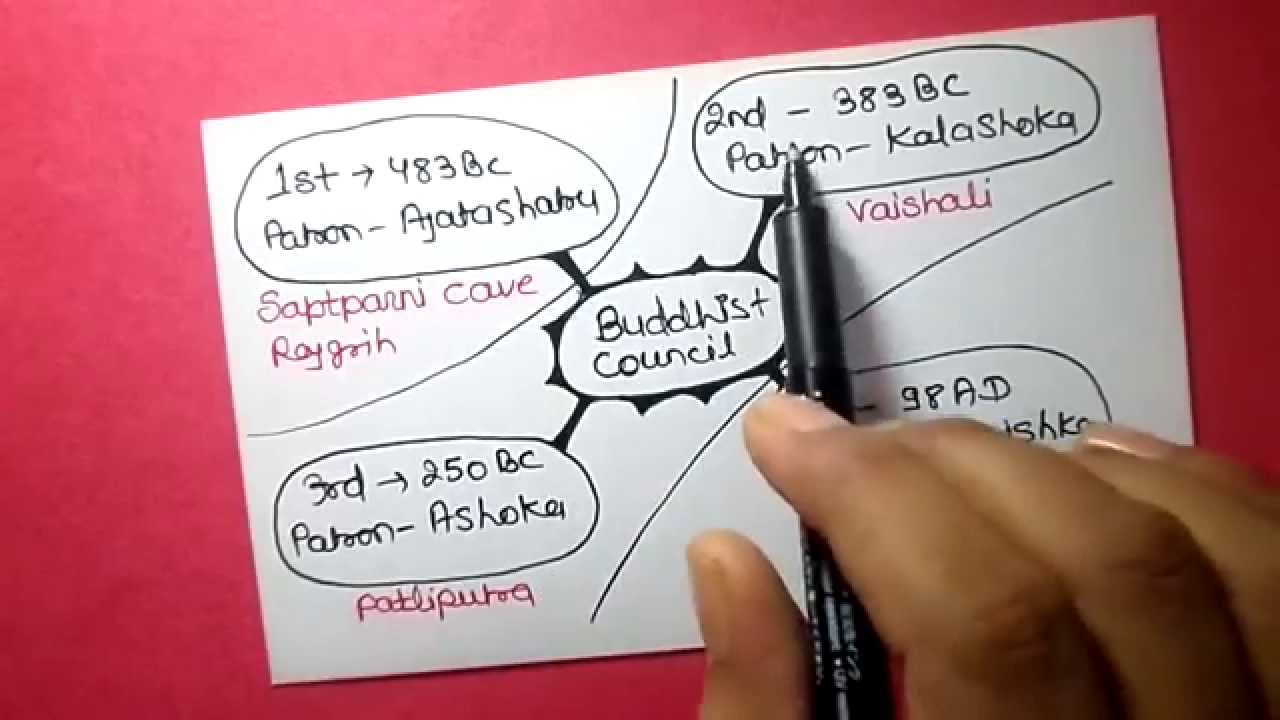Indian History Notes-Buddhist Councils-For WBCS Mains Exam
Indian History is an integral and one of the most important part of W.B.C.S Examination.According to tradition, immediately after the Buddha’s death, a gathering of 500 monks took place at Rajagriha in about 487 B.C. representing various sanghas under the leadership of Mahakassapa. The assembled monks discussed, collated and classifieds the discourses of the Buddha into authoritative canonical texts. Upali and Ananda, two of the Buddha’s chief disciples, said to have recited the Vinaya Pithaka and Sutta Pitaka infront of the gathering. Historians doubt the authenticity of this account.As per the syllabus of W.B.C.S it is very important to read Indian History thoroughly for fetching good marks.Continue Reading Indian History Notes-Buddhist Councils-For WBCS Mains Exam.
About a hundred years after the Buddha’s death the second Buddhist council was said to have been convened at Vaisali, around 387 B.C. The council was called mainly to discuss certain serious differences that arose within the Buddhist Order over the true interpretation of the Buddha’s teachings and certain practices followed by some monks, especially the monks of Vaisali. The orthodox followers of the Buddha believed that the monks of Vaisali were taking liberties with the rules prescribed in the Vinaya Pitaka. The council discussed the matter at length, but could not reach an agreement. This resulted in the great schism within the Order and led to the formation of the two divergent schools of thought. The first school advocated strict adherence to the age old traditions of Buddhism and compliance with the original teachings of the Buddha. They were called The Sthaviravadins. The second group did not find a problem in having a liberal attitude towards the rules prescribed in the Pitakas and the deviations followed by the monks of Vaisali. They became known as the Mahasamghikas. The schism subsequently led to the formal division of Buddhism into irreconcilable Hinayana and the Mahayana sects. Some historians, however, doubt the authenticity of the second council also.
First Buddhist Council
- Venue: In Sattaparnaguha Cave situated outside Rajgriha (the modern city of Rajgir).
- Year: 486 BC.
- King: Ajatasatru, son of King Bimbisara (Haryanka Dynasty).
- Presiding Priest: Venerable Maha Kasyapa with 500 monks.
- Took place 3 months after the Buddha’s Passing.
- The First Buddhist Council collected together and arranged the Buddhist Scriptures known as the Pali Tipitaka.Also Read, How to prepare History Optional For W.B.C.S Mains.
Second Buddhist Council
- Venue: Vaishali.
- Year: 386 BC
- King: Kalasoka (Shisunaga Dynasty).
- Presiding Priest: Sabakami.
- Took place 100 years after the Buddha’s passing.
- In order to settle a serious dispute on Vinaya.
- The dispute arose over the ‘Ten Points.’
- This is a reference to claims of some monks breaking ten rules, some of which were considered major.
- The specific ten points were:
- Storing salt in a horn.
- Eating after midday.
- Eating once and then going again to a village for alms.
- Holding the Uposatha Ceremony with monks dwelling in the same locality.
- Carrying out official acts when the assembly was incomplete.
- Following a certain practice because it was done by one’s tutor or teacher.
- Eating sour milk after one had his midday meal.
- Consuming strong drink before it had been fermented.
- Using a rug which was not the proper size.
- Using gold and silver.
- Split of the Buddhist order into Sthaviravadinis(Theravada) and Mahasanghikas. Split was over small points of monastic discipline.
- The Second Buddhist Council made the unanimous decision not to relax any of the rules, and censured the behavior of the monks who were accused of violating the ten points.
Third Buddhist Council
- Venue: Pataliputra (today’s Patna).
- Year: 250 BC.
- King: Ashoka (Maurya Dynasty).
- Presiding priest: Mogaliputta Tissa (Upagupta).
- Its objective was to reconcile the different schools of Buddhism and to purify the Buddhist movement, particularly from opportunistic factions which had been attracted by the royal patronage.
- The responses to doctrinal questions and disputes formulated at the Third Council were recorded by Moggaliputta Tissa in the Kathavatthu, one of the books of the Abhidhamma Pitaka.
- Made Sthaviravada School as an orthodox school – believed that the past, present, and future are all simultaneous. They may have contributed some formative influence to Mahayana.
- Codification of Abhidhamma pitaka, dealing with Buddhist philosophy written in Pali.
Fourth Buddhist Council
- Venue: Kundalavana, Kashmir.
- Year: 72 AD
- King: Kanishka (Kushan Dynasty) ,was a patron of Buddhism and was instrumental in spreading the religion in north-western borders of India.
- Presiding Priest: Vasumitra; deputed by Asvaghosha.
- The fourth Buddhist Council had to deal with a serious conflict between the Sarvasthivada teachers of Kashmir and Gandhara.
Our own publications are available at our webstore (click here).
For Guidance of WBCS (Exe.) Etc. Preliminary , Main Exam and Interview, Study Mat, Mock Test, Guided by WBCS Gr A Officers , Online and Classroom, Call 9674493673, or mail us at – mailus@wbcsmadeeasy.in
Please subscribe here to get all future updates on this post/page/category/website



 Toll Free 1800 572 9282
Toll Free 1800 572 9282  mailus@wbcsmadeeasy.in
mailus@wbcsmadeeasy.in


















































































































